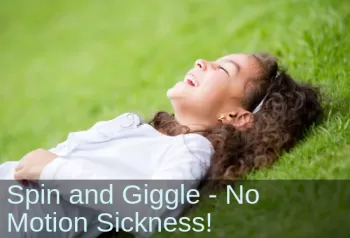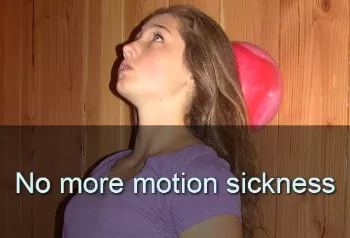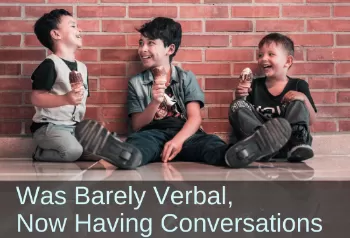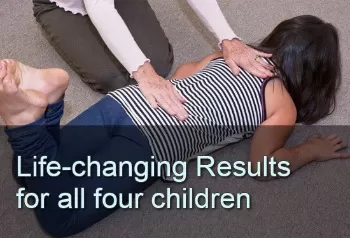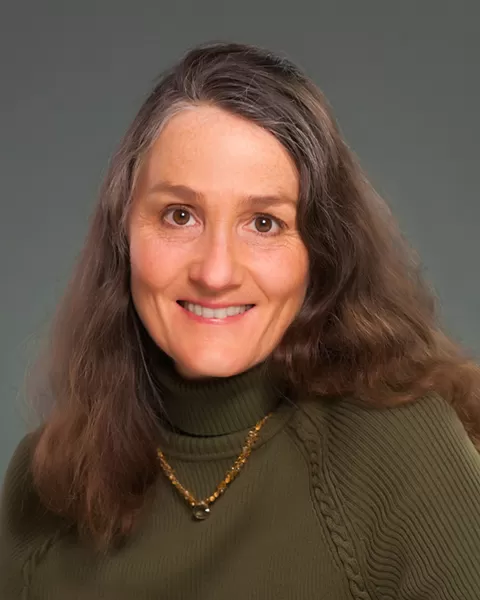Motion Sickness and Dizziness
Overcoming Motion Sickness and Dizziness with Neurodevelopmental Movements
by Sonia Story, M.S.
Have you ever wondered why some children love roller coaster rides and other children avoid them? Why can some children go on long car rides on curving roads, but other children get nauseated in the car?
Most likely, the difference lies in how well the child’s head control and vestibular system were developed in infancy and early childhood. The development of head control is vital for sensory processing systems to work together effectively. Head control is so important that it is one of the first things an infant begins to develop after birth. This is underscored by the significant number of reflexes that involve head and neck movement, including: Moro, Tonic Labyrinthine Reflex, Asymmetrical Tonic Neck Reflex, Symmetrical Tonic Neck Reflex, Headrighting, and others.
When these primitive reflexes do not reach maturity, it is often associated with motion sickness and a tendency to get dizzy when the head moves. Motion sickness is not only uncomfortable, it can also provoke anxiety.
Many individuals have found that a combination of rhythmic movements, Tonic Labyrinthine Reflex, and Moro integration can help with motion sickness.
Years ago a mother called me about her 8-year-old daughter Bella, who struggled with motion sickness and near-constant queasiness—even after undergoing extensive sensory integration therapy with an occupational therapist. Because of the nausea, I wondered if gut issues were involved and I recommended seeking help from a doctor or nutritionist. However, this mother had already taken her daughter to numerous specialists with no resolution of the queasiness. When I met Bella I noticed that her pupils seemed unusually large—indicating that perhaps Bella’s nervous system was underdeveloped and stuck in a state of fight or flight. I also learned that Bella was sensitive to light, sound, touch, and motion.
These were clues to me that most likely Bella’s Moro reflex was unintegrated (active) and could use some help to mature and integrate (become dormant). When the Moro reflex is unintegrated, it can leave the sensory systems in agitated, underdeveloped states. I also knew that if Moro and the Tonic Labyrinthine Reflex (TLR) are active, individuals are likely to experience vestibular underdevelopment and sensory processing issues; which could result in poor balance, nausea, and motion sickness.
After 2 months of doing her movement program of innate rhythmic movements and reflex integration, Bella's queasiness changed, but did not go away. She was still experiencing queasiness, but now it was intermittent rather than constant. When Bella did experience nausea, she reported that it was more intense for her than before.
Bella’s mother continued with their home movement program, and by the 4th month the episodes of queasiness were nearly gone. They became far less frequent and much less intense. What a relief!
Since working with Bella, I have witnessed many other individuals—children and adults—resolve their motion sickness with consistent use of these simple yet powerful movements. We have seen the most success for addressing motion sickness and dizziness when we use a combination of innate rhythmic movements, Moro reflex integration, and Tonic Labyrinthine Reflex integration. Other reflexes may also be helpful, depending on the individual.
The great thing about these movements is that, even if we skipped or missed the full amount of them in infancy it is never too late to benefit from doing them. This is because the brain and body automatically recognize and respond to these movements, using them as fuel to continue the positive progress toward optimal development. Here is a wonderful example of this principle: One therapist using these tools helped a 55-year-old man eliminate his life-long motion sickness. This man was able to go on a boat trip vacation with his wife for the first time, and enjoy it.
While neurodevelopmental movements may not help with motion sickness in every case, it is worth giving them a try since they are non-invasive and often highly effective.
See how these individuals were able to overcome challenges with motion sickness after using the neurodevelopmental movements:
This child's motion sickness was so severe she couldn't ride in a car for more than four blocks, and couldn't even tolerate being on her tummy. See how her mom introduced rhythmic movements into the family's schedule in small but increasing amounts to completely resolve her motion sickness.
This Occupational Therapist used rhythmic movements to resolve her own extreme car sickness. See how she went from not being able to read in the car at all to being able to consistently read for long stretches.
Rhythmic movements and reflex integration made a huge difference in this little boy's life. See how—along with improvements for a wide range of challenges—his motion sickness has almost completely disappeared.
Help for the family—four children with different sets of challenges. One of the siblings felt queasy whenever riding in a car, and would get sick if the drive was more than 30 minutes. After rhythmic movements and Moro Reflex integration, his motion sickness was completely eliminated!
See related case studies showing how balance and vestibular challenges can be addressed with primitive reflex integration and innate rhythmic movements.
Sonia Story, M.S. has been teaching neurodevelopmental movements since 2006.
Sonia developed the Brain and Sensory Foundations program to provide comprehensive training in neurodevelopmental movements—combining innate rhythmic movements, play, primitive reflexes, and postural reflexes.
She earned a Bachelor's degree in biology/psychology and a Master’s degree in Movement Sciences. She is the author of The Importance of Reflex Integration and the Evidence eBook, giving the rationale and evidence basis for using neurodevelopmental movements for helping with challenges such as ADHD, Sensory Processing Disorders, anxiety, emotional dysregulation, visual skill deficits, poor social skills, gross and fine motor delays and other neurodevelopmental and behavioral disorders.
Her work is featured in numerous podcasts, summits, and conferences, and in the books Almost Autism: Recovering Children from Sensory Processing Disorder; Special Ed Mom Survival Guide; Family Health Revolution; and Same Journey, Different Paths—Stories of Auditory Processing Disorder.
Sonia’s mission is to help children and families experience the profound benefits of neurodevelopmental and integrative movements for more functional and fulfilling lives.


